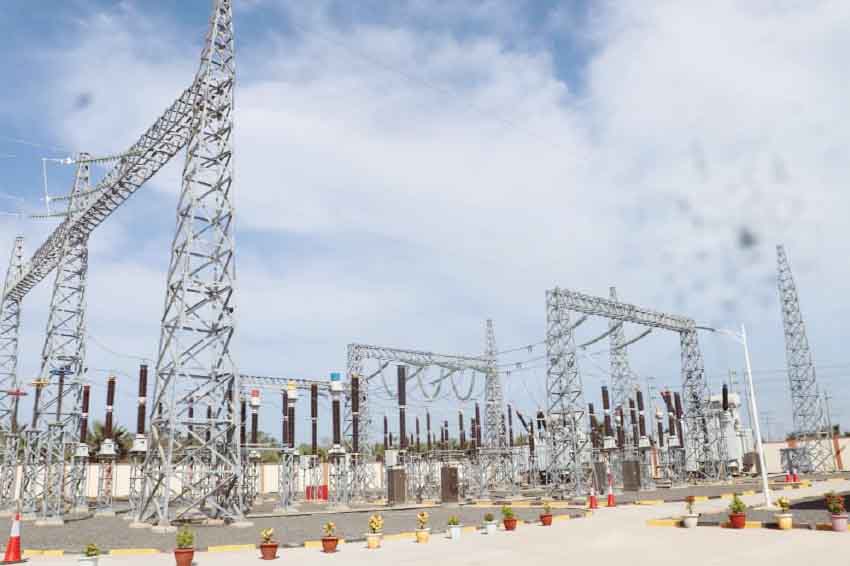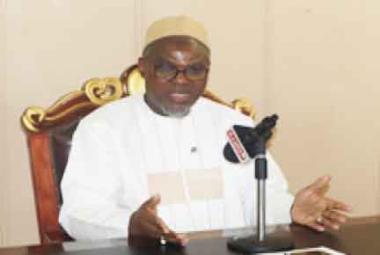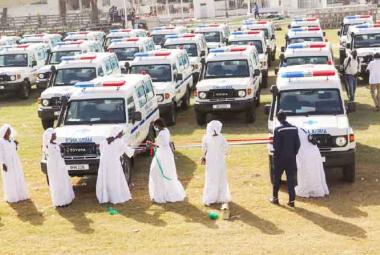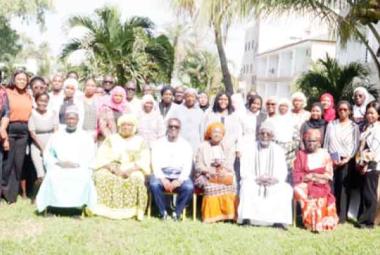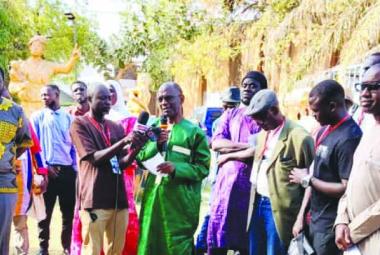Banjul, 24th February 2025: As part of events commemorating The Gambia’s 60th Independence Anniversary celebrations, His Excellency President Adama Barrow recently inaugurated the country’s first 225KV Transmission line and Distribution Modernisation Project at the Salagi Forest.
The project, spearheaded by the Ministry of Petroleum, Energy, and Mines in collaboration with the National Water and Electricity Company (NAWEC), is funded by World Bank Group, the European Union, and the European Investment Bank. The groundbreaking project was executed by TBEA as the primary contractor.
The newly inaugurated Transmission and Distribution (T&D) Modernisation Component is expected to significantly reduce frequent power outages and low voltage issues by stabilising electricity flow from primary and secondary stations. Infrastructure upgrades within the Greater Banjul Area will enhance NAWEC’s capacity to deliver reliable electricity to homes and businesses, fostering economic growth and improving living conditions.
In his speech, President Barrow emphasised the historic significance of the project, noting that this is The Gambia’s first high-voltage transmission line linked to a national control centre in the country’s 60-year history as a sovereign state. “This project will transform our power supply system from analog to digital, making it more robust, resilient, and efficient. It lays the foundation for a national electricity grid, enabling the transmission of large volumes of power across the country,” he remarked.
Looking ahead, President Barrow called for the completion of the eastern backbone to finalise the national grid, which will integrate The Gambia’s power supply system with the OMVG power transmission system and, ultimately, the larger West African Power Pool (WAPP) network. This integration will allow The Gambia to import and export electricity within the regional power pool, ensuring greater energy security and sustainability.
“With this milestone, The Gambia is taking a significant step toward achieving reliable, affordable, and sustainable electricity for all its citizens,” President Barrow concluded.
The Governor of West Coast Region, Mr Ousman Bojang, underscored the significance of this project, marking it as the first national high-voltage infrastructure transmitting electricity over long distances. He emphasised the growing energy demand in Gambian households and the President’s goal of achieving universal energy access by 2025.
World Bank Group Country Director Keiko Miwa highlighted the Bank’s support for The Gambia, noting that “reliable and affordable electricity is the backbone of economic growth, social transformation, and private sector development.
He added: “With a total envelope of $200 million in support of the energy sector, the World Bank Group is not only upgrading infrastructure but also supporting the government in powering homes, businesses, and opportunities for a brighter, more sustainable Gambia”.
Roger Stuart, Head of the European Investment Bank’s Regional Office for West and Central Africa, spoke about the power sector’s transformation, emphasising the project’s role in enhancing energy access and sustainability. “We are proud to support The Gambia in its journey towards a more resilient and efficient power sector. This project is a key step in improving the country’s electricity supply, benefiting homes, businesses, and the overall economy.”
Immaculada Roca I Cortés, Ambassador of the European Union to The Gambia, reiterated the EU’s commitment to the GERMP project, noting that its support aligns with the EU’s Global Gateway initiative, aimed at fostering collaboration and connectivity between Europe and Africa.
“The European Union is committed to supporting The Gambia in ensuring a bright and prosperous future for its people. Reliable access to energy is an indispensable element in realising this vision,” he stated.
The Gambia Electricity Restoration and Modernisation Project (GERMP) comprises several key components, including an 18km, 225kV Transmission Line from Brikama to Jabang, a National Control Centre, a 225/33kV Substation in Jabang, and a 33kV Substation in Kotu . Additionally, it also includes six 33kV Medium Voltage (MV) lines, upgrades to three primary substations and the rehabilitation of 52 secondary substations.
By Anna Marie Valentine
& Lamin Kujabi

